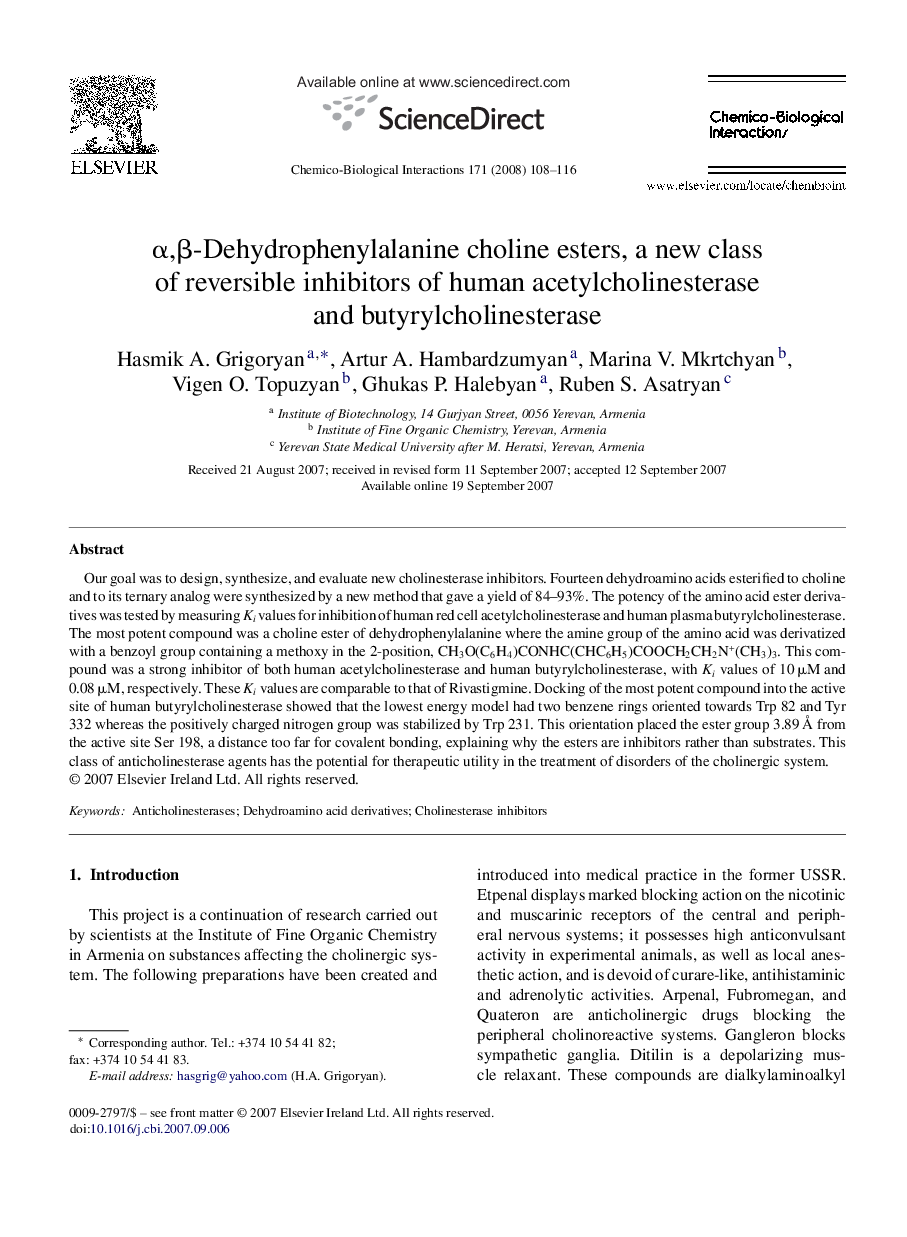| Article ID | Journal | Published Year | Pages | File Type |
|---|---|---|---|---|
| 2582107 | Chemico-Biological Interactions | 2008 | 9 Pages |
Our goal was to design, synthesize, and evaluate new cholinesterase inhibitors. Fourteen dehydroamino acids esterified to choline and to its ternary analog were synthesized by a new method that gave a yield of 84–93%. The potency of the amino acid ester derivatives was tested by measuring Ki values for inhibition of human red cell acetylcholinesterase and human plasma butyrylcholinesterase. The most potent compound was a choline ester of dehydrophenylalanine where the amine group of the amino acid was derivatized with a benzoyl group containing a methoxy in the 2-position, CH3O(C6H4)CONHC(CHC6H5)COOCH2CH2N+(CH3)3. This compound was a strong inhibitor of both human acetylcholinesterase and human butyrylcholinesterase, with Ki values of 10 μM and 0.08 μM, respectively. These Ki values are comparable to that of Rivastigmine. Docking of the most potent compound into the active site of human butyrylcholinesterase showed that the lowest energy model had two benzene rings oriented towards Trp 82 and Tyr 332 whereas the positively charged nitrogen group was stabilized by Trp 231. This orientation placed the ester group 3.89 Å from the active site Ser 198, a distance too far for covalent bonding, explaining why the esters are inhibitors rather than substrates. This class of anticholinesterase agents has the potential for therapeutic utility in the treatment of disorders of the cholinergic system.
